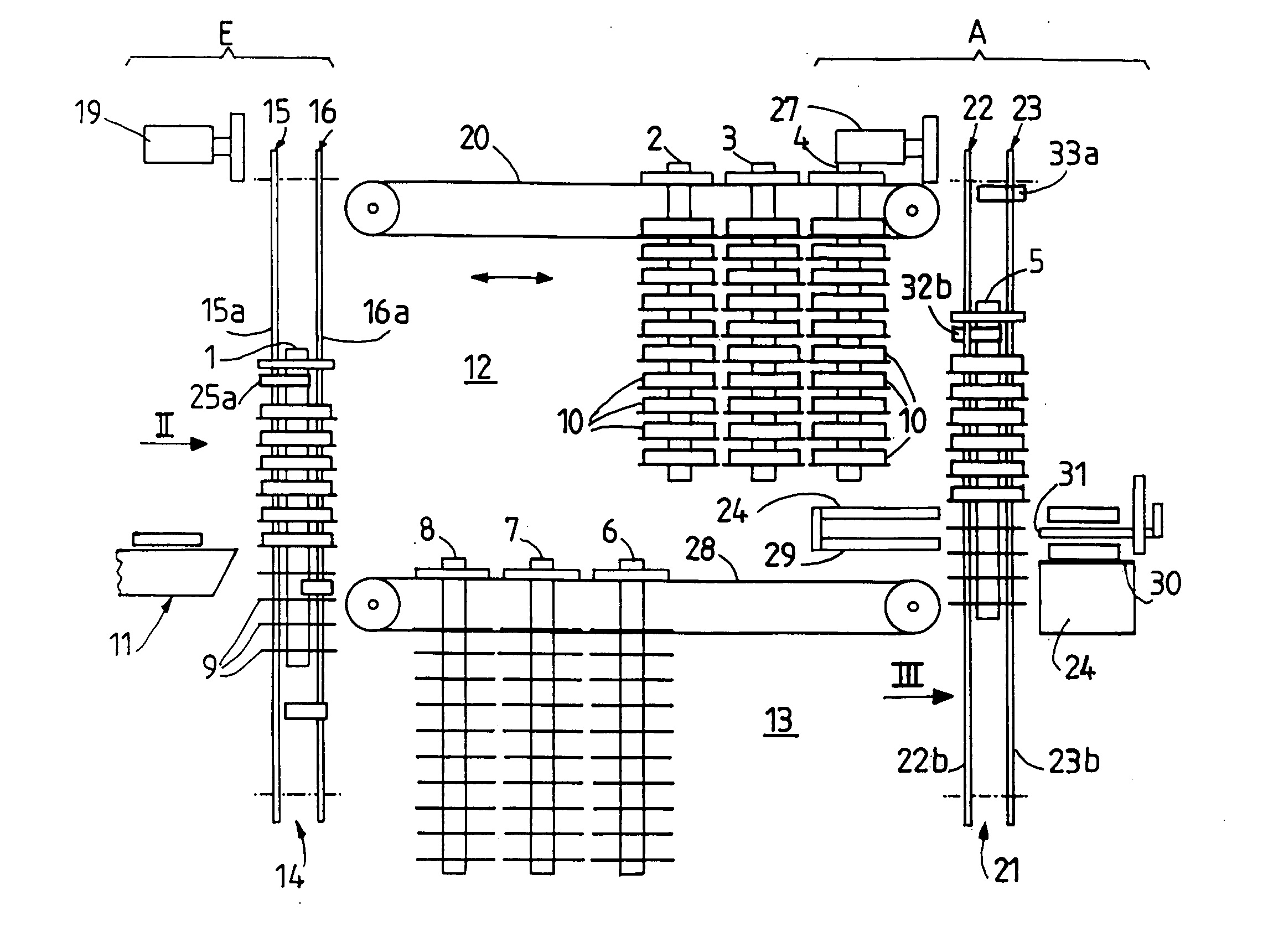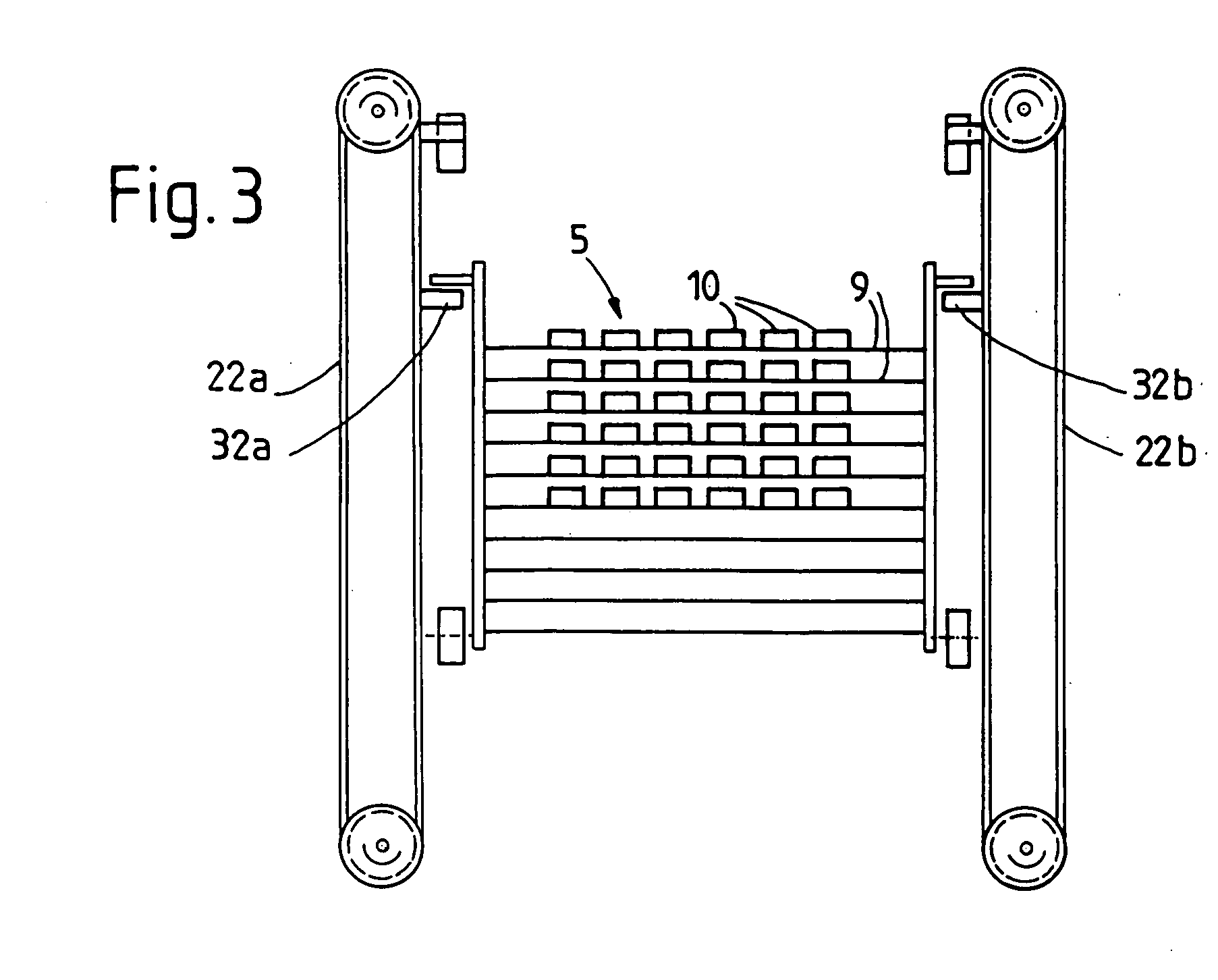Intermediate store
- Summary
- Abstract
- Description
- Claims
- Application Information
AI Technical Summary
Benefits of technology
Problems solved by technology
Method used
Image
Examples
Embodiment Construction
[0036] The intermediate store shown in the drawing contains eight transport racks, which are denoted by 1-8. Here, each of these transport racks is equipped with ten equidistant shelves 9, the size of the shelves and their mutual spacing being adapted to the size and the weight of the products 10 to be transported. The intermediate store has an input station E and an output station A and, between these two stations, two buffer zones, a first denoted by 12 for the loaded transport racks in the upper part of the store and a second denoted by 13 for the empty transport racks in the lower part of the store. Of course, each of the two buffer zones 12 and 13 must be so large that they can hold all except two of the transport racks present in the entire intermediate store, i.e. six in the example shown, which cannot be seen exactly in FIGS. 1 and 4.
[0037] The input station E contains a loading device which is indicated here only very schematically and is denoted by 11. The input station f...
PUM
 Login to View More
Login to View More Abstract
Description
Claims
Application Information
 Login to View More
Login to View More - R&D
- Intellectual Property
- Life Sciences
- Materials
- Tech Scout
- Unparalleled Data Quality
- Higher Quality Content
- 60% Fewer Hallucinations
Browse by: Latest US Patents, China's latest patents, Technical Efficacy Thesaurus, Application Domain, Technology Topic, Popular Technical Reports.
© 2025 PatSnap. All rights reserved.Legal|Privacy policy|Modern Slavery Act Transparency Statement|Sitemap|About US| Contact US: help@patsnap.com



